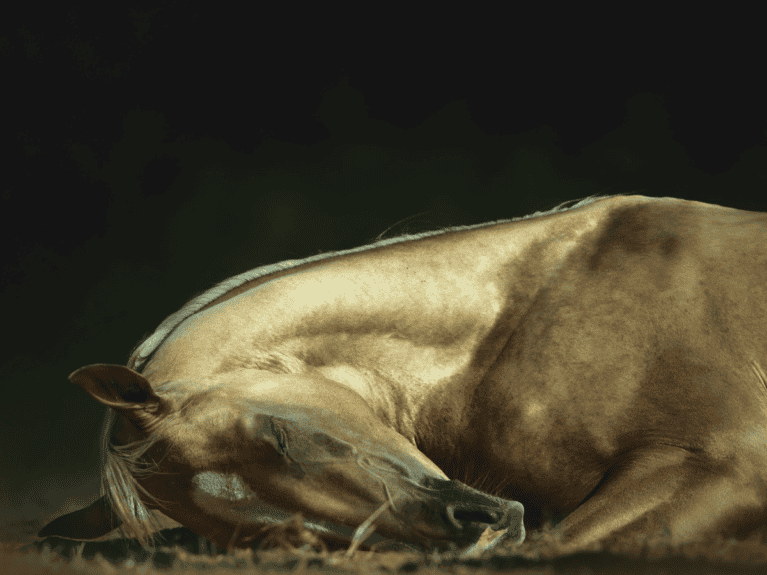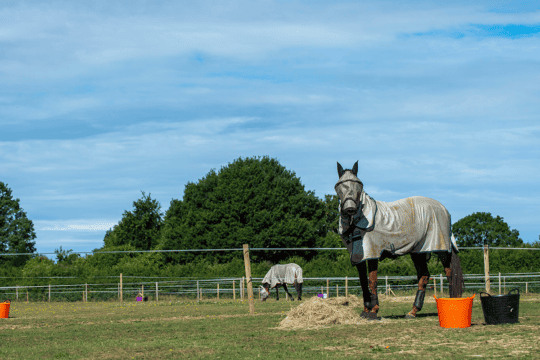H&R sets the record straight on what’s true and what’s not when it comes to some of these common misconceptions

Where looking after your horse is concerned there’s one simple rule, right? That is, you want to do the best for him and make sure he stays happy and healthy.
With some aspects of horse care, there are beliefs that are, perhaps, a little outdated and ongoing research has proven they’re no longer accurate. Then there are others that are simply not – and never have been – true.
We’ve collated a selection of popular statements and cleared up the mysteries behind the truth, the whole truth and nothing but the truth.
Myth: Horses always sleep standing up
While it’s true that horses can sleep standing up, this doesn’t mean they always do. Like us, horses need REM sleep for brain, muscle and immune system recovery, and to get this they must lie down. Horses may also choose to lie down just to rest.
Plan of action: A clean bed in his stable and companions he feels secure with in the field will help him feel comfy and safe to lie down, rest his legs, digest his feed and get some REM Zzzzzs in.
Myth: Black hooves are stronger than white ones
‘One white hoof buy it, two try it, three look well about it, four do without it’ – the saying comes from an ancient myth that white hooves are weaker than black ones, but the truth is there’s no real difference in structure.
The cells making up the hoof are called melanocytes and they produce pigment that creates hoof colour, not structure. Instead of colour, your horse’s hoof quality depends on his breed, genetics, environment and hoof care regime.
Plan of action…
- pick out feet daily, checking for loose shoes, any wedged stones or other objects and signs of heat or abnormalities
- have your horse trimmed by a good farrier around every six weeks
- avoid repeated changes in environment, such as going from wet to dry (a boggy field to a shavings bed, for example)
- avoid work on hard ground
Myth: You have to plait your horse’s mane on the right for competition
In the show ring, the right hand side is considered correct but for other equestrian sports it doesn’t matter which side you plait on. In fact you don’t have to plait at all!
Plan of action: If you compete in a discipline other than showing and choose to plait for competitions, you have two options…
- If your horse’s mane naturally falls on the left, train it over to the right by thinning it from the right side, wetting it then plaiting it over. Plaits need to be left in for a few days to be effective, so don’t plait too tightly or they may cause your horse discomfort.
- Plait your horse’s mane on the side it naturally lies and don’t overthink it!
Did you know?
Traditionally, manes were plaited on the right so the rider could check the horse’s conformation before mounting.
Myth: Horses only need vaccinating if they’re competing or leaving the yard
Every horse should be vaccinated against equine influenza and tetanus. Influenza is an airborne virus and can spread up to 5km. Even if you don’t compete or travel, other horses at your yard may pick it up and pass it on to yours. Any horse can get tetanus and the consequences of both diseases can be debilitating – even deadly.
Plan of action: If your horse’s vaccinations aren’t up to date contact your vet to start a new course, then keep on top of them to avoid having to start the whole course over again.
Top tip
If you compete under a governing body it’s important to check their current rules on vaccines to ensure you’re covered.
Myth: If your horse’s worm count is clear there’s no need to worm
Faecal egg counts help prevent resistance and eliminate unnecessary drug use, which is better for your horse and the environment. However, they only monitor certain types of worms, and can’t detect tapeworm, encysted redworm or bots.
Plan of action: Discuss a yearly testing and worming plan with your vet. You can also reduce worm burden by…
- removing droppings from paddocks at least each week
- rotating paddocks regularly and resting them for a few weeks at a time
- avoiding over-stocking. Allow at least 1.5 acres per horse
Myth: You mustn’t let your horse drink after exercise
Like us, horses can become dehydrated if they don’t have access to water, and modern thinking suggests it’s okay to offer water immediately after exercise.
Plan of action: Don’t restrict access to water. Offer water as soon as possible after exercise. If you’re out competing, offer water every 20 minutes or so if it’s not possible to provide continuous access. It’s also okay for him to drink during exercise – for example if there is a clean water source on a long hack.
Did you know?
It’s thought there’s just as high a risk of a horse getting colic from being dehydrated as there is if he drinks water straight after exercise.















